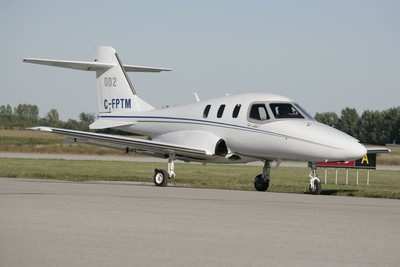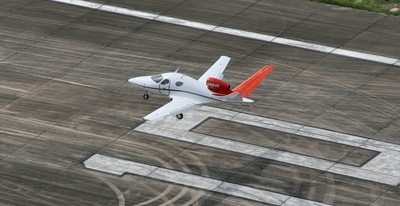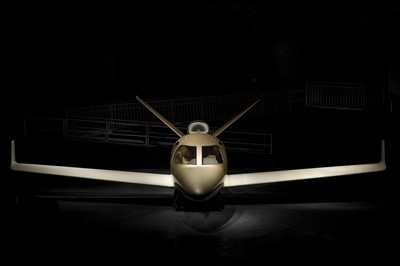All Hail The Aero-Heroes of 2007!
It is both the most "fun," and most difficult, task facing the
ANN staff at the end of every year -- determining who, or what, did
the most to promote the cause of aviation in the past 365 days...
while also chastising those people or entities that did all they
could to undermine the many successes the aviation/aerospace
community has managed to accomplish.

Thankfully, 2007 was a year in which we saw the best and
brightest among us step forward and work tirelessly on behalf of us
all. No doubt about it... the challenges we faced in 2007 were
numerous, and ongoing... so was the quality of expertise and
passion brought to our defense by those who heroically demonstrated
to the world the very best side of aviation... via their deeds,
words and actions.
It is ANN's honor to recognize a solid dozen of our Aero-Heroes
for 2007... in something of an informal order, starting from 12th
to the 1st. Let us know what you think of our selections... whom
YOU would have liked be included or omitted from such a list. In
the meantime, we thank the folks who made this year's list. Thank
you, folks... we really needed you this year, and you didn't let us
down.
From the Hero's List... #11: D-Jet/ECJ/TheJet
Roger Ramjet and George Jetson may soon find themselves with
something to be jealous of... as a new generation of exciting GA
birds start showing their feathers in the skies over North America
-- in the next few years. The dream of being a jet pilot,
especially of a jet you own and operate yourself, is about to
become a reality for hundreds of pilots who have lined up (so far)
for their chance to plunk down at least a million bucks and break
free of their piston-powered chains and limitations.
Three machines (so far) have shown how intensely intriguing this
market segment can be.

Diamond's D-Jet is likely to be the first of a
new generation of personal jets to get into private owner's hands
and will have a handy lead over the other entrants in the single
engine jet sweepstakes. Diamond's design is a brilliant
example of building enough of what everybody needs in a product,
while avoiding the temptation to over-design. The simplicity and
performance of the Williams powered Diamond D-Jet is likely to make
it not only the first of a new generation, but one of the most
popular aircraft for a number of years to come. Diamond has a
sterling reputation for supporting their product line, devoting
significant resources to training and pilot education requirements,
and has been positively prescient in determining what market trends
are the best to pursue. The D-JET is a 5 place luxury personal jet,
powered by the FADEC controlled Williams FJ33 turbine and equipped
with a Garmin all-glass flight deck and autopilot. Production
D-Jets are expected to have a cruise speed of 315 knots, FIKI
Certification, and operating altitudes of 25,000 feet. Two flight
test vehicles are in the air and certification is expected for the
middle of next year.

One of the biggest surprises of 2007 (to everyone but ANN... who
was THERE for the TOP SECRET first flight) was the appearance of an
amazing new concept for single engine jet airplanes, borrowing
heavily from the pioneering work done on the revolutionary Eclipse
500. A possible production version of the ECJ (Eclipse
Concept Jet) is expected to cruise at a top speed of 345
knots with a service ceiling of 41,000 feet. The aircraft's range
is estimated to be 1,250 nautical miles. A unique element of the
ECJ's aerodynamic design is its empennage, which features an
external mounted engine pod and V-Tail vertical surfaces that
create what Eclipse terms "exceptional" aerodynamic, weight, and
operational benefits. The ECJ shares a number of design elements
with the Eclipse 500. Common to the ECJ and the Eclipse 500 are the
wing assembly minus the tip tanks, which includes the ailerons, the
fuel system, main landing gear and actuators, flaps and flap
actuators, wheels and brakes. The nose assembly is also common to
both aircraft and includes the nose landing gear assembly, landing
gear doors, forward pressure bulkhead, air conditioning and oxygen
supply. The ECJ also features Eclipse's all-electric (and recently
certified) Avio NG system, controlling aircraft computer systems,
flight control trims, autopilot, electrical power distribution,
FADEC, air data, AHRS, landing gear and flap actuation. All of the
ECJ's major system components are controlled and managed using Avio
NG, just as they are on the Eclipse 500. The aircraft's effect is
sexier than hell and while there has been no official position on
whether Eclipse will actually go ahead and commit to building this
aircraft, it's future is all but certain. The reason? Eclipse
admits to being "blown away" by how much interest there was in this
bird... as there were hundreds who voiced the willingness to throw
their money down if Eclipse was willing to promise to build them
one... we have a feeling that they'll get their wish.

Cirrus Design reinvigorated the current
world of general aviation by bringing exotic new technologies, a
nearly obsessive interest in safety, and an uncanny knack for
building useful airplanes back to the business. Over 3000 airplanes
have been build using piston technology, but it's obvious that the
Klapmeier brothers wanted something "More." And last summer, ANN
was the first show you what "More" really means... Cirrus Style.
"the-jet" will have a cruise speed of 300 knots at
25,000 feet MSL, room for up to seven people with a unique seating
scheme, 1000 nm range and will be "competitively" priced between $1
million and $1.2 million -- though Alan Klapmeier maintains a
desire to bring the basic aircraft in at under a million dollars,
fly away. "We're calling it a 'personal jet', not because of its
size but because it's a natural extension of our SR22 line," said
Cirrus co-founder and CEO Alan Klapmeier. "Like the SR22, 'the-jet'
is designed to be owner flown and it will be loaded with innovative
features, including the Cirrus Airframe Parachute System. While
it's technologically advanced, it's designed to be exceptionally
easy to fly, offering customers the opportunity to grow into yet
another lifestyle change with Cirrus." Most striking about
"the-jet's" shape is the v-tail empennage arrangement, to make room
for the single Williams turbofan, carried atop the raked fuselage
in a smoothly integrated fairing. The lines of the fuselage carry
forward to a bulbous roofline over the cockpit, which offers
seating for a pilot and four adult passengers -- one in the right
seat, and three behind (or as many as seven, with a combination of
kids and adults).
 Aero-News: Quote of the Day (05.20.25)
Aero-News: Quote of the Day (05.20.25) ANN's Daily Aero-Term (05.20.25): Handoff
ANN's Daily Aero-Term (05.20.25): Handoff ANN's Daily Aero-Linx (05.20.25)
ANN's Daily Aero-Linx (05.20.25) Airborne-NextGen 05.20.25: Drone Regs, Zero-Emission Cargo, Door-Dash Drone
Airborne-NextGen 05.20.25: Drone Regs, Zero-Emission Cargo, Door-Dash Drone Airborne 05.19.25: Kolb v Tornados, Philippine Mars, Blackhawk Antler Theft
Airborne 05.19.25: Kolb v Tornados, Philippine Mars, Blackhawk Antler Theft






